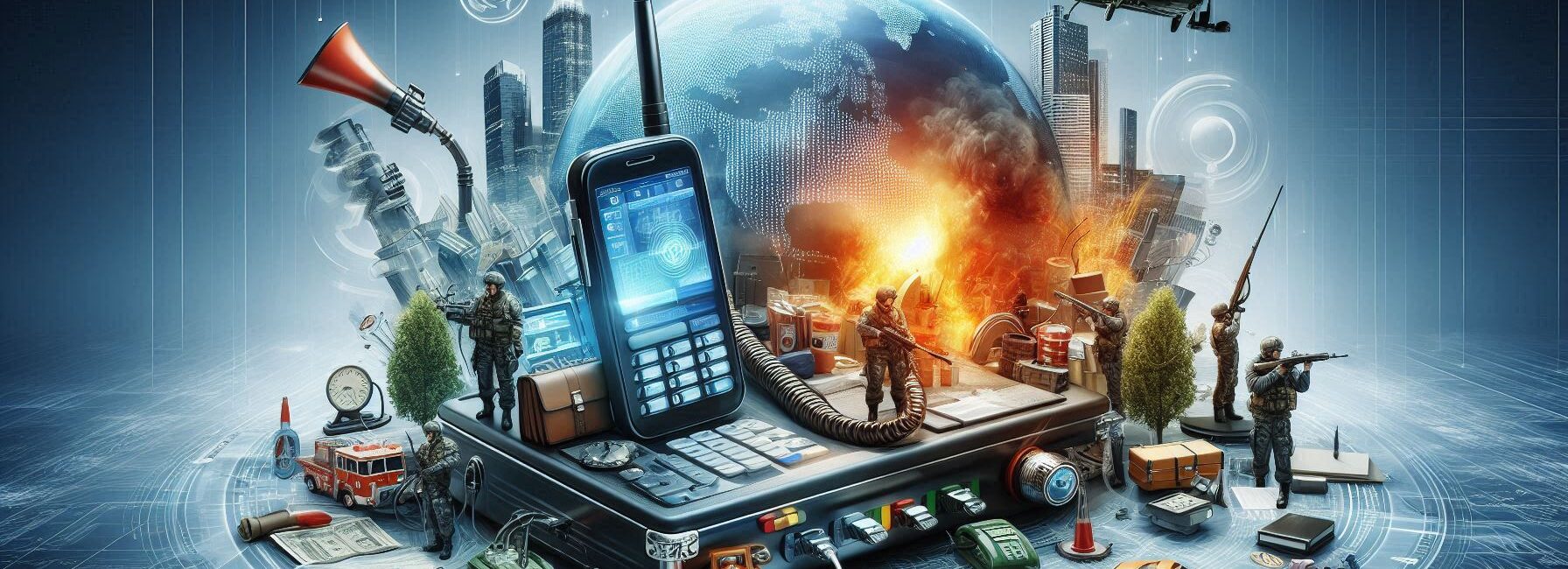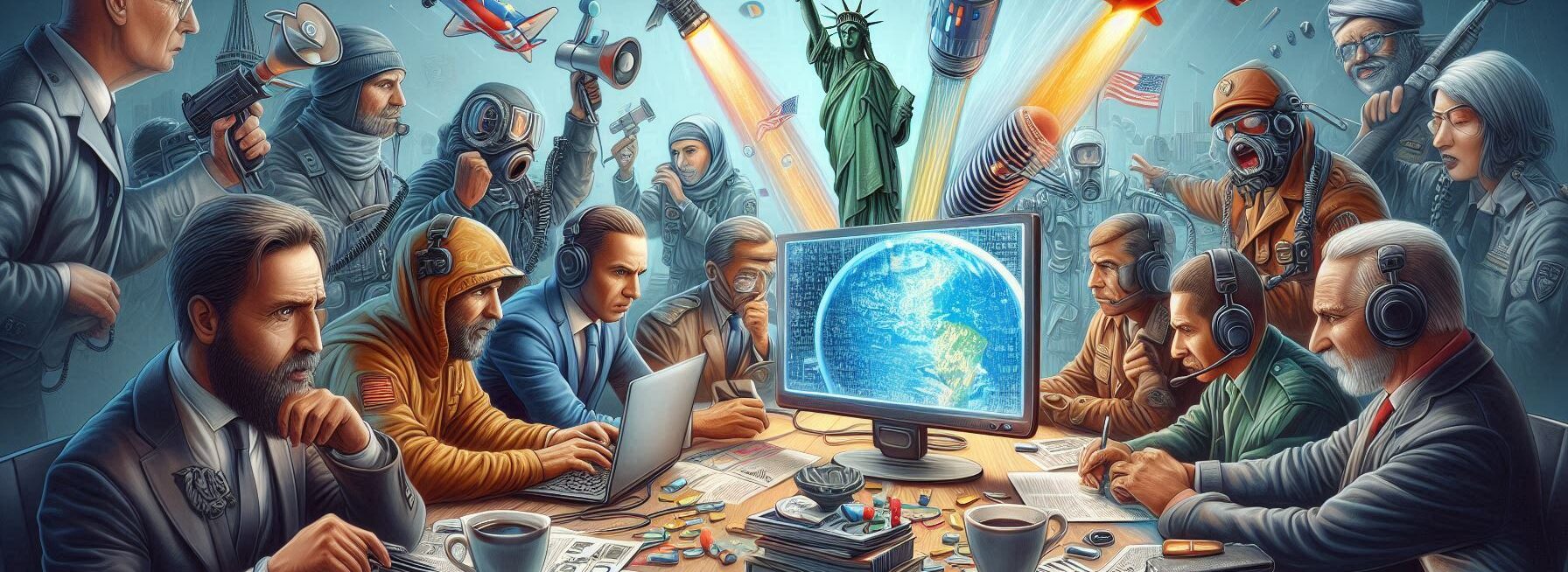Please Note: This post may contain affiliate links. If you click one of them, we may receive a commission at no extra cost to you. As an Amazon Associate, I earn from qualifying purchases.
Last Updated on November 2, 2025 by Kevin Collier
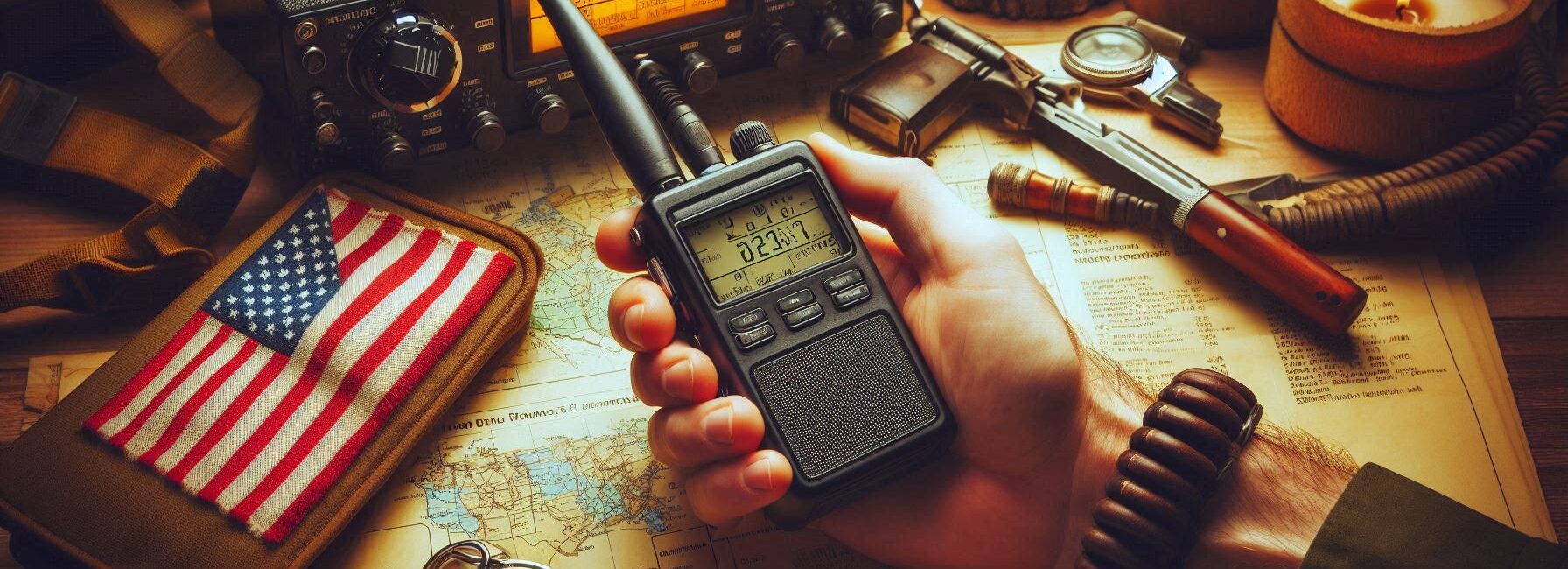
Top Takeaways and Key Concepts
– Obtain a ham radio license to communicate effectively in emergencies.
– Choose the right equipment based on your needs and location.
– Practice regular communication drills with family or friends.
– Learn basic operating procedures and emergency protocols.
– Stay informed about local frequencies and emergency channels.
Picture this: you're outside, and everything seems a little strange. Your phone? Not useful. Like a teapot made of chocolate melting in the light. You can't make any calls. You can't text or message your friends or family. You get scared for a second, but then you recall something great: ham radio!
Ham radio is like magic for talking to people. It works when nothing else does. Think about how great it would be to be able to talk to someone who is far away, even if you are lost in the woods. It's like having a secret superpower without the tight suit; you just have a cool small radio. You hit a button, and boom! You're linked.
It's not too hard to use ham radio too. You only need to practice a little. It's like riding a bike. It feels shaky at first. But soon you're speeding along and talking. Very satisfying.
Think about all those stories you hear about people seeking aid in stressful times. A friendly voice on the radio tells them how to go back. You may be that person! Knowing that your voice could aid someone in a tough spot is a fantastic feeling.
The best part? You don't need a lot of expensive stuff to get started. A simple radio and some information may make a big impact. It may sound a little old-fashioned, but it works. Plus, it's interesting to talk to people you don't know who live in various places. It's like making new pals all across the world from your own small piece of nature.
When you get ready for your next adventure, think about bringing a ham radio. It's like putting in another safety net. Knowing you can get aid will make you feel safer. And who doesn't want to relax and appreciate nature? So let's accept those superpowers, even if they don't come with capes.
What is Ham Radio?
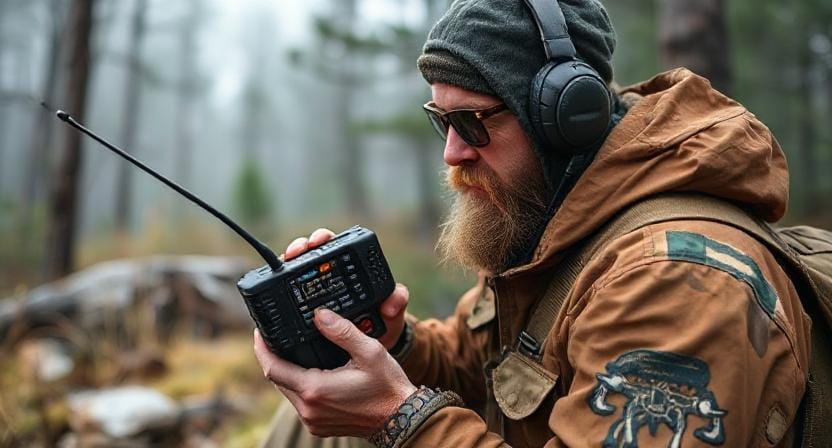
*** Shop for Survival Gear - Tools - Kits ***
Survival Gear - Bags and Backpacks - Knives - Boots/Footwear - Communication
Outdoor Cooking - Gloves - Hydration - Dry Boxes - Water Filtration Systems
Tents - Sleeping Bags - First Aid Kits - Multi-Tools - Flashlights - Fire Starters
Navigation - Survival Food - Night Vision - Headlamps - Stun Guns - Binoculars
If you assume “ham” means bacon, you're not completely wrong, but I wouldn't advocate trying to eat it. People can talk to each other over vast distances without using commercial networks by using ham radio, which is also called amateur radio.
Instead of talking about who won last night's game, think of it as a secret society where everyone speaks about UFO sightings and weather trends.
It's interesting because ham radios work on different frequencies and can send signals far farther than normal walkie-talkies.
This implies that even when tragedy comes and cell towers go down faster than my willpower at an all-you-can-eat buffet, you can still reach out and talk to other people.
How to Start Using Ham Radio
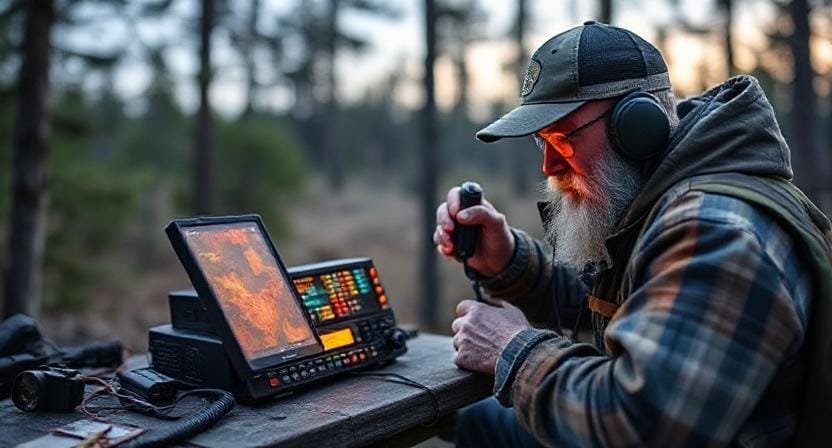
Now that you're interested in this fascinating world of communication gadgets, let's talk about how to get started. You need a license first! Yes, you need to have some formal training to use a ham radio, just like you need to learn how to drive a car or take care of a pet iguana. But don't worry; passing the test is easier than finding Bigfoot (unless he shows up during the test).
You can get ready for the license exam by taking programs in person or online. Now that you have your license, it's time to choose your gear.
You can choose between portable handheld transceivers and more powerful base stations for people who wish to set up shop at home. It's like selecting between camping in a tent and moving into an RV!
Choosing Your Gear
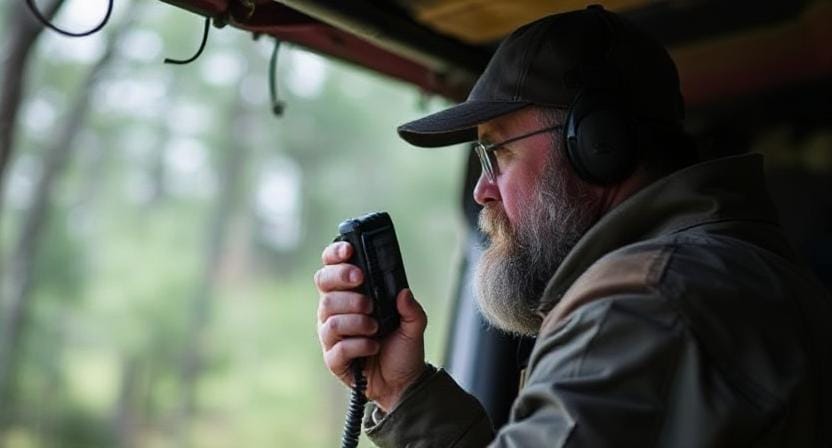
When it comes to equipment, it's quite important to choose the correct gear for communicating well during situations. To be honest, there are so many choices that even Goldilocks would have a hard time picking the one that was “just right.”
If you're just starting out, I suggest getting a simple portable radio, which is often termed an HT. They're small and simple to use, so they're great for throwing in your backpack before you go on an expedition or putting under your pillow when Uncle Bob begins repeating his fishing stories again.
If you want more power and range, you could wish to buy mobile rigs or base station configurations as you get more experience or just because you like collecting gadgets like they're Pokémon cards. Keep in mind that greater power doesn't imply more bacon; it means better communication!
How to Understand Frequencies
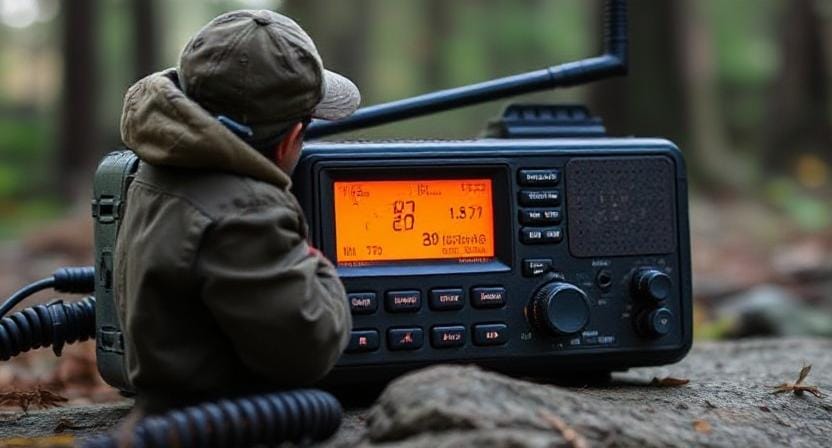
It's important to know how frequencies function in ham radio land once you've got your gear all set up. Each frequency is linked to certain bands that let you communicate in different ways. It's like deciding whether to SMS someone about dinner plans or give them pictures of lovely pups.
When getting ready for crises, focus on the VHF (Very High Frequency) and UHF (Ultra High Frequency) bands. These channels are great for short-range communication, which is great when you're going through thick forests or trying to get through cities full of confused squirrels.
But hold on! There are also HF (High Frequency) bands that let you chat to people over vast distances, like talking to someone in another state without having to drink three cups of coffee first! These frequencies demand more technical know-how but could prove invaluable if you ever find yourself requiring assistance from afar.
Making a Plan For How To Talk To People
So, you have your license and gear ready. What's next? It's really important to make a good communication plan!
Let's see… Start by making a list of important people who should get emergency messages. For example, family members who live nearby? Do you have friends all throughout the country? That neighbor who always asks to borrow sugar but never gives it back?
Pick out the channels you'll use in an emergency ahead of time, because some frequencies can be busier than my kids' soccer games on the weekends! Also, make sure everyone knows how often they should check in. This will keep Aunt Judy from panicking that aliens have taken her again!
Also, think about setting up pre-written messages for different situations so you don't have to think too hard when you're anxious about something bad happening. A simple message like “I'm safe!” can help lower your anxiety levels a lot!
Getting Better at Your Skills
Last but not least, practice makes perfect! Using your ham radio abilities on a regular basis can assist make sure that everything goes smoothly when you need to use them in an emergency.
Make time each month to practice with family or friends who are also hams in your region. It may be fun! Try setting up fake emergency drills where everyone pretends there has been an alien invasion and practices using their radios to talk to each other. This is an excellent reason to wear tinfoil hats!
But in the end, being ready means knowing how to use these fantastic gadgets when you need them most, much like knowing where all the camp's secret food are!
Frequently Asked Questions
Do you need a license to legally use ham radio?
Yes, a license is required to transmit on amateur radio frequencies in most countries.
What type of ham radio equipment is best for beginners?
A simple handheld portable radio is often recommended for new users due to ease of use and affordability.
Which frequencies are most useful for emergency communication?
VHF and UHF bands are commonly used for short-range emergency contacts, while HF bands reach longer distances.
Why is practicing ham radio communication important?
Regular practice ensures you can operate smoothly under stress and quickly relay information during emergencies.
Can ham radios reach people when cell networks fail?
Yes, ham radios operate independently of cell towers and can still function when commercial networks are down.
What is an emergency communication plan?
It is a prearranged set of contacts, channels, and check-in intervals to follow during a crisis.
Is ham radio equipment expensive to start with?
No, many affordable handheld radios exist that allow beginners to get started without high cost.
Suggested Resources:
Ham Radio License Exam Study Guide
https://www.arrl.org/ham-radio-license-exam-study-guide
Amateur Radio Emergency Service
https://www.arrl.org/ares
How To Choose a Ham Radio
https://www.hamradio.com/how-to-choose-a-ham-radio

Kevin Collier is a seasoned survivalist and expert in prepping and homesteading, contributing to WiseSurvive.com. With a deep-rooted passion for self-sufficiency and outdoor survival skills, Kevin shares practical advice, strategies, and resources to help individuals prepare for any challenge. His informative articles cover a range of topics, from essential survival techniques to sustainable living practices, empowering readers to thrive in any situation. Whether you're a novice or a seasoned prepper, Kevin's insights will inspire you to take charge of your readiness and build resilience for the future.


